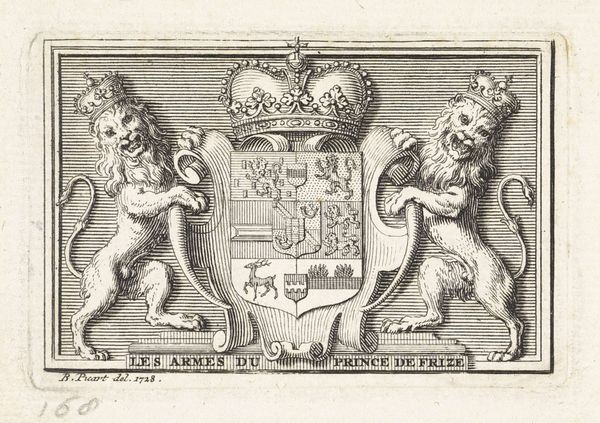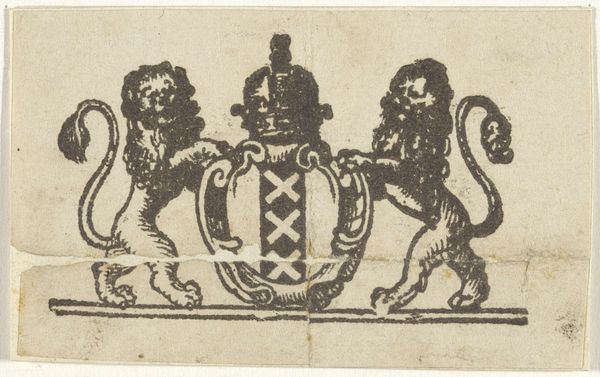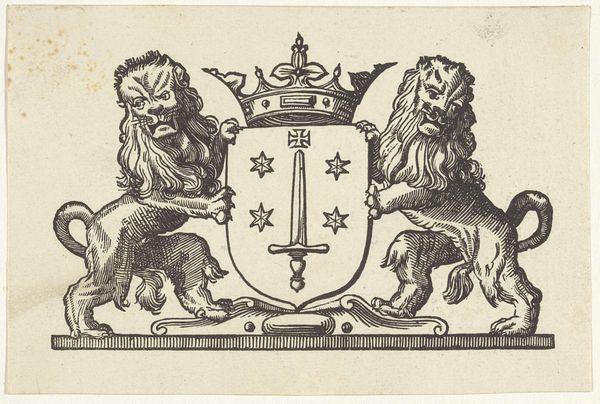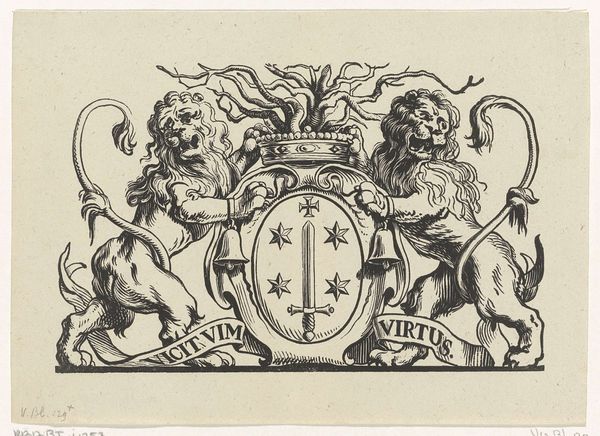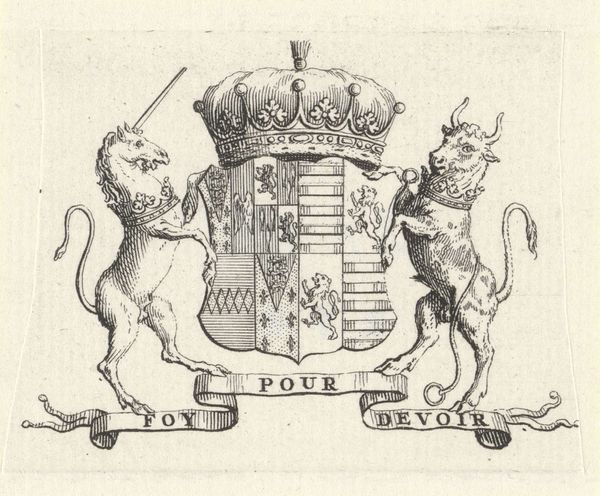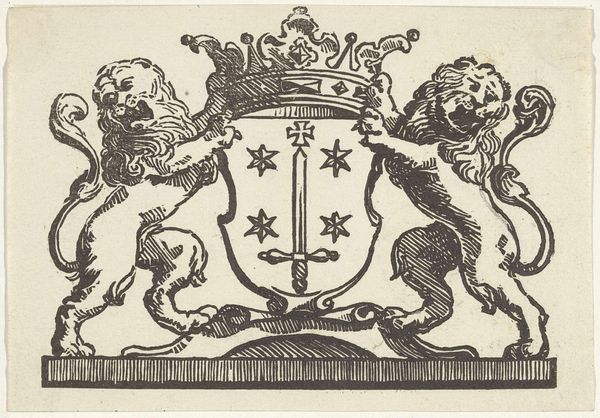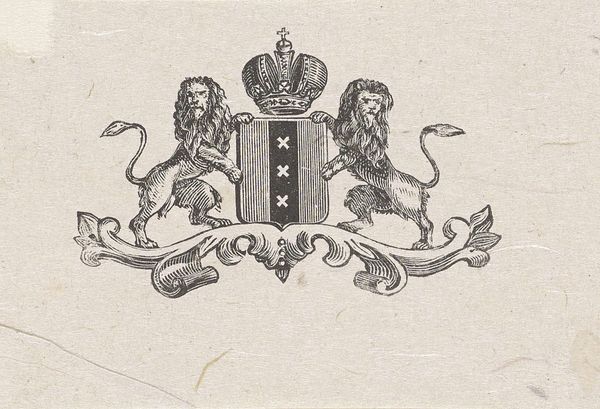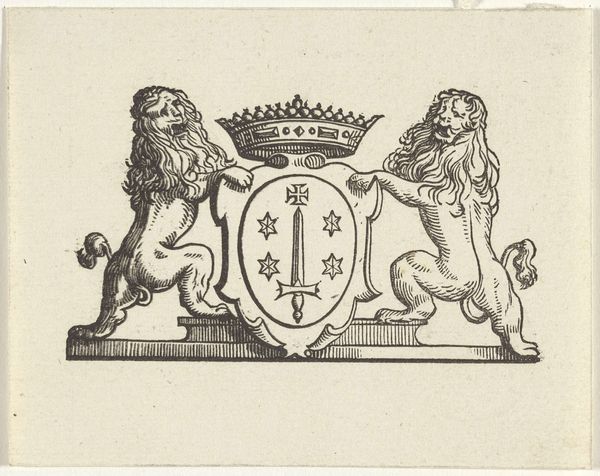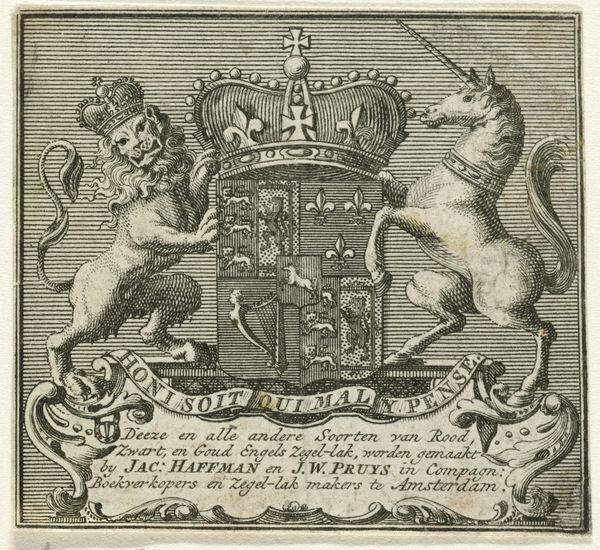
graphic-art, print, metal, engraving
#
graphic-art
#
allegory
#
baroque
# print
#
metal
#
line
#
decorative-art
#
engraving
#
realism
Dimensions: height 95 mm, width 123 mm
Copyright: Rijks Museum: Open Domain
Jacobus Baptist created this etching of 'The Amsterdam Coat of Arms' around the turn of the 18th century. At the time, the Dutch Republic was a major economic power, deeply involved in global trade and colonialism. In this print, two lions, symbols of strength and courage, support a shield emblazoned with three Saint Andrew's crosses, topped by an Imperial Crown. The symbolism reflects Amsterdam’s identity as a powerful trade center. But this image, like any symbol of power, carries a complex history. Amsterdam's wealth was, in part, built on the exploitation of enslaved people through the Dutch West India Company. The coat of arms then becomes more than a symbol of civic pride. It also serves as a reminder of the city’s role in a global system of inequality. Look closely, and consider what it means to see such symbols today, in a world still grappling with the legacies of colonialism and slavery.
Comments
No comments
Be the first to comment and join the conversation on the ultimate creative platform.

